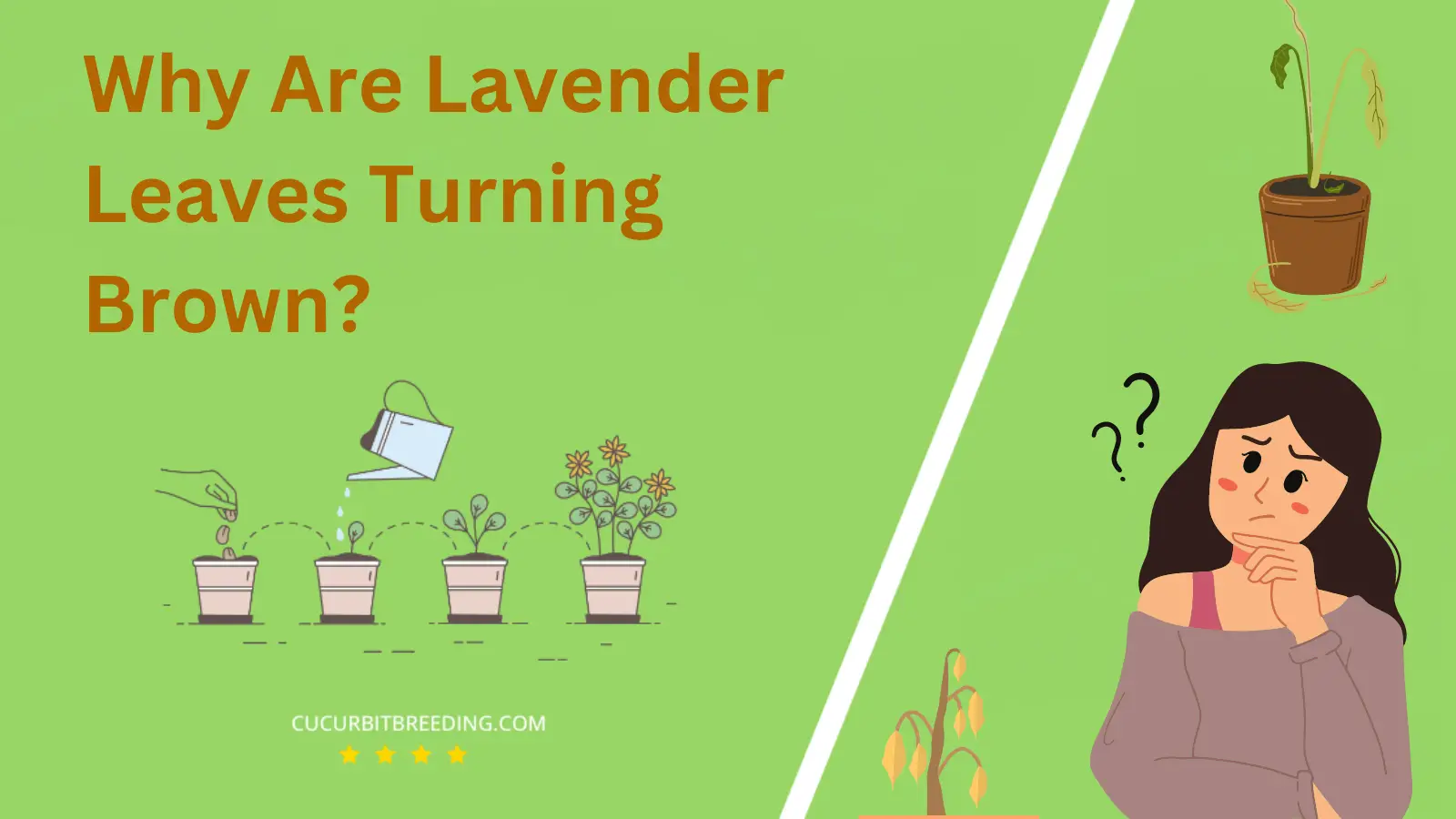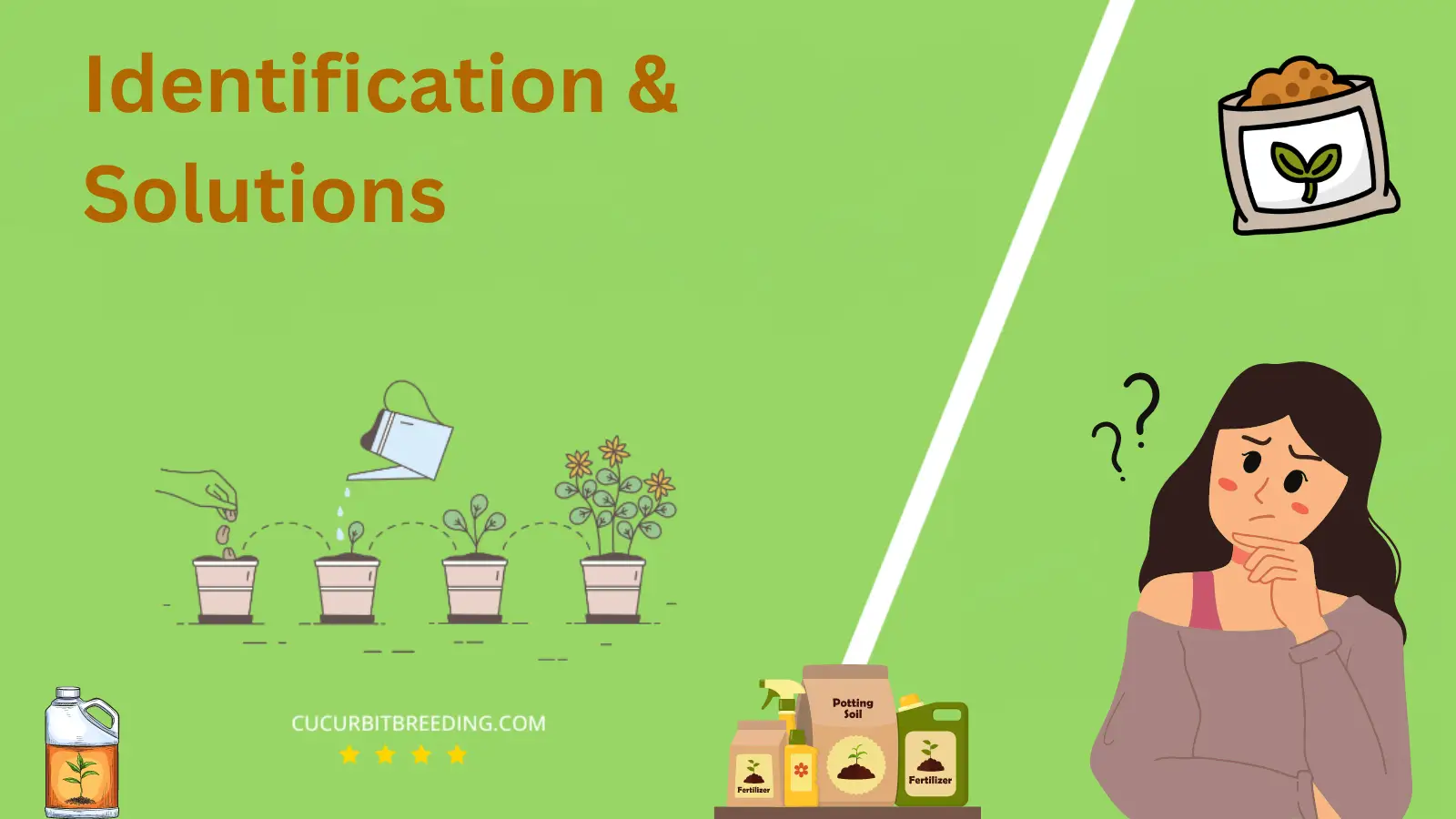
When the lush green leaves of your Lavender plants start turning brown, it can be quite disconcerting. As an avid gardener, you know the importance of keeping your plants healthy, but this sudden change might leave you puzzled.
Is it due to a lapse in your gardening consistency or could it be a sign of a more serious issue? This article will steer you in the right direction, and unravel the mystery behind the colour shift in your lavender leaves.
Why Are Lavender Leaves Turning Brown?
Lavender leaves often turn brown due to overwatering, poor drainage, and root rot. When lavender is overwatered or planted in an area where the soil stays overly moist, it can lead to root rot which causes the leaves to turn brown. Extreme weather conditions such as frost or excessive heat can also lead to brown leaves on lavender plants. Lastly, infestation by pests or diseases may result in brown leaves. For a more detailed guide on the causes and how to fix this issue, please continue reading.
1. Fungal infections
| Description | Fungal infections cause physiological changes that make lavender leaves turn brown. |
|---|---|
| Solution | Apply a fungicide to prevent and treat fungal infections that cause brown discoloration on lavender leaves. |
Fungal infections can cause lavender leaves to turn brown. These infections can occur due to various reasons such as overly moist soil, poor air circulation, or high humidity. Fungi thrive in these conditions and can attack the plant, leading to browning of the leaves.
To address this problem, it is essential to improve the growing conditions for lavender. Firstly, ensure that the plant is not overwatered and that the soil has adequate drainage to prevent waterlogging. Additionally, it is crucial to provide proper air circulation around the plant by spacing them appropriately and avoiding overcrowding. This can be achieved by planting lavender in well-spaced rows or providing enough distance between individual plants.
Another solution is to avoid overhead watering, as it can create a moist environment ideal for fungal growth. Instead, water the plant at the base, directly at the root zone, to keep the foliage dry. This can be done using a drip irrigation system or by watering the plant with a watering can at the soil level.
Furthermore, pruning infected parts of the lavender plant can help control the spread of fungal infections. Remove any brown or diseased leaves, stems, or flowers, making sure to disinfect pruning tools between cuts to prevent further contamination.
Lastly, applying a fungicide specifically formulated for lavender can be beneficial in treating fungal infections. Follow the instructions provided on the product label and apply the fungicide as directed to effectively control the infection.
By addressing the growing conditions, practicing proper watering techniques, pruning infected parts, and using appropriate fungicides, the issue of lavender leaves turning brown due to fungal infections can be mitigated, allowing the plant to thrive and maintain its healthy green foliage.
2. Overwatering
| Description | Fungal diseases cause lavender leaves to turn brown due to infection and damage to tissues. |
|---|---|
| Solution | Reduce watering frequency and allow soil to dry between waterings to prevent root rot. |
Overwatering can cause lavender leaves to turn brown. When the plant receives more water than it needs, the roots become saturated, leading to poor oxygen circulation and root rot. This lack of oxygen and excessive moisture can stress the plant, resulting in browning leaves. To address this issue, it is important to adjust the watering frequency and amount to better suit the plant’s needs. Ensure that the soil is well-draining and allow it to dry out between watering sessions.
Additionally, consider planting lavender in pots or raised beds with good drainage to prevent waterlogging. Regularly monitoring soil moisture levels and adjusting watering accordingly will help prevent overwatering and maintain healthy lavender plants.
3. Nutrient deficiencies
| Description | Result in chlorophyll breakdown, leading to leaf discoloration and eventual browning. |
|---|---|
| Solution | Provide a balanced fertilizer to address nutrient deficiencies and promote healthy growth of leaves. |
Nutrient deficiencies can cause lavender leaves to turn brown. When the plant lacks essential nutrients such as nitrogen, phosphorus, or potassium, it can result in discoloration and browning of the leaves. This problem affects the plant’s overall health and appearance, as brown leaves can make it look unhealthy and unattractive.
To address this issue, it is crucial to provide the plant with the necessary nutrients. This can be done by using a balanced fertilizer specifically formulated for lavender plants. Regularly fertilizing the soil will help replenish the nutrients and prevent further leaf browning. Additionally, ensuring proper watering practices and maintaining well-draining soil will also assist in nutrient absorption and reduce the risk of nutrient deficiencies.
By addressing the nutrient deficiencies promptly, the browning of lavender leaves can be minimized, promoting a healthier and more vibrant plant.
4. Insufficient sunlight
| Description | Result in chlorophyll breakdown, leading to leaf discoloration and eventual browning. |
|---|---|
| Solution | Provide a balanced fertilizer to address nutrient deficiencies and promote healthy growth of leaves. |
Insufficient sunlight can cause lavender leaves to turn brown. When lavender plants don’t receive an adequate amount of sunlight, their ability to photosynthesize and produce energy is compromised. This leads to the browning of the leaves as they are unable to receive the necessary nutrients and energy to stay healthy.
To address this issue, it is crucial to provide lavender plants with sufficient sunlight. Ideally, lavender requires at least six to eight hours of direct sunlight per day. Positioning the plants in an area that receives ample sunlight will help prevent the leaves from turning brown. If natural sunlight is limited, using artificial grow lights specifically designed for plants can be a suitable alternative.
Additionally, regularly monitoring the positioning of the lavender plants and ensuring they are not blocked by objects or overshadowed by other plants is essential. Trimming nearby trees or shrubs that may be casting shadows on the lavender can also help maximize sunlight exposure.
In summary, the primary reason for lavender leaves turning brown is insufficient sunlight. Providing the plants with enough direct sunlight, either naturally or using artificial grow lights, and ensuring they are not overshadowed by other objects or plants will help prevent this issue.

5. Pests or insects
| Description | Provide a balanced fertilizer to address nutrient deficiencies and promote healthy growth of leaves. |
|---|---|
| Solution | Apply organic insecticide to eliminate pests and insects that are causing the lavender leaves to turn brown. |
Pests or insects can be a reason why lavender leaves turn brown. When these pests or insects attack the plant, they feed on the leaves, causing damage and ultimately leading to browning. This can negatively impact the health and appearance of the lavender plant.
To address this issue, various solutions can be implemented. Firstly, regular inspection of the plants is crucial to identify any pest infestation at an early stage. If pests are detected, using organic insecticides or insecticidal soaps specifically designed for lavender can help control the infestation. Additionally, introducing beneficial insects such as ladybugs or lacewings can act as natural predators to eliminate the pests. Proper plant care practices, such as maintaining good air circulation and avoiding overwatering, can also help prevent pest problems.
By addressing the issue of pests or insects promptly and implementing these solutions, the browning of lavender leaves can be minimized, ensuring the plant’s health and vitality.
6. Environmental stress
| Description | such as drought or excessive heat can cause a disruption in chlorophyll production, leading to browning. |
|---|---|
| Solution | Increase watering to provide adequate moisture and humidity levels for healthy leaf growth. |
Environmental stress can cause lavender leaves to turn brown. Factors such as extreme temperatures, drought, excessive sunlight, or insufficient watering can all contribute to this issue.
When lavender plants are exposed to high temperatures or prolonged periods of drought, they may struggle to absorb enough water and nutrients from the soil, leading to brown leaves. Additionally, excessive sunlight can cause the leaves to become scorched and turn brown.
To address this problem, it is important to provide the lavender plant with proper care and conditions. Ensuring that the plant receives sufficient water, especially during hot and dry periods, can help prevent leaf browning. Providing some shade or using a shade cloth can also protect the plant from excessive sunlight.
It is also beneficial to plant lavender in well-draining soil and avoid overwatering, as this can lead to root rot and further stress the plant. By addressing these environmental stressors, the lavender plant can regain its health and prevent further browning of its leaves.
7. Improper pruning
| Description | Improper pruning causes the lavender leaves to turn brown due to disrupted nutrient flow. |
|---|---|
| Solution | Proper pruning to remove dead or damaged branches can prevent lavender leaves from turning brown. |
Improper pruning can cause lavender leaves to turn brown. When lavender plants are pruned incorrectly, it can lead to stress and damage to the plant. This can result in browning of the leaves.
To address this issue, it is important to ensure that lavender plants are pruned properly. First, it is crucial to use clean and sharp pruning tools to avoid any damage to the plant. When pruning, it is recommended to remove only about one-third of the plant’s foliage at a time. This allows the plant to maintain its shape and health while minimizing stress. Additionally, it is important to prune lavender plants in the appropriate season, typically after flowering.
Furthermore, it is essential to avoid over-pruning, as this can lead to excessive stress on the plant and promote browning of the leaves. Maintaining a balanced pruning routine and avoiding drastic pruning measures can help prevent the leaves from turning brown. Regularly inspecting the plant for any signs of pests or diseases and promptly addressing any issues can also contribute to the overall health and vitality of the lavender plant.